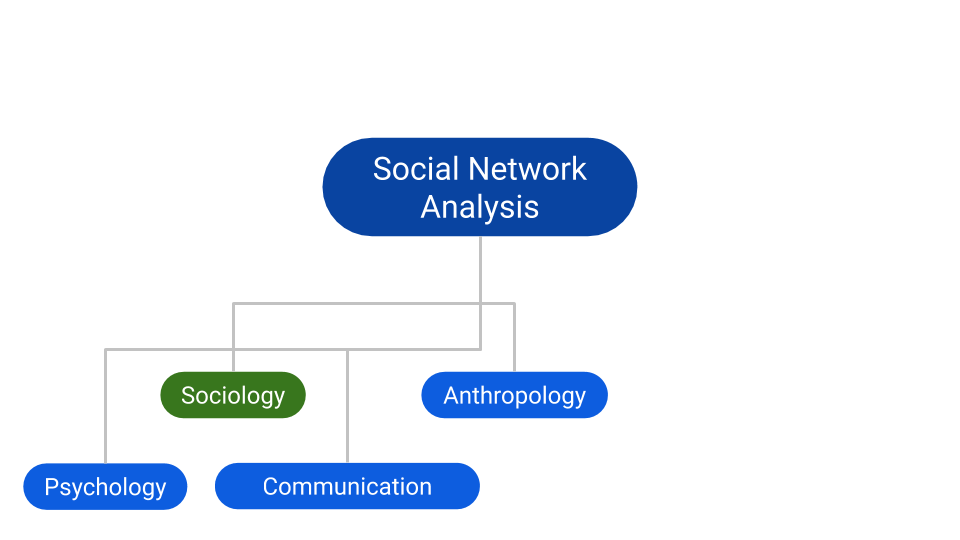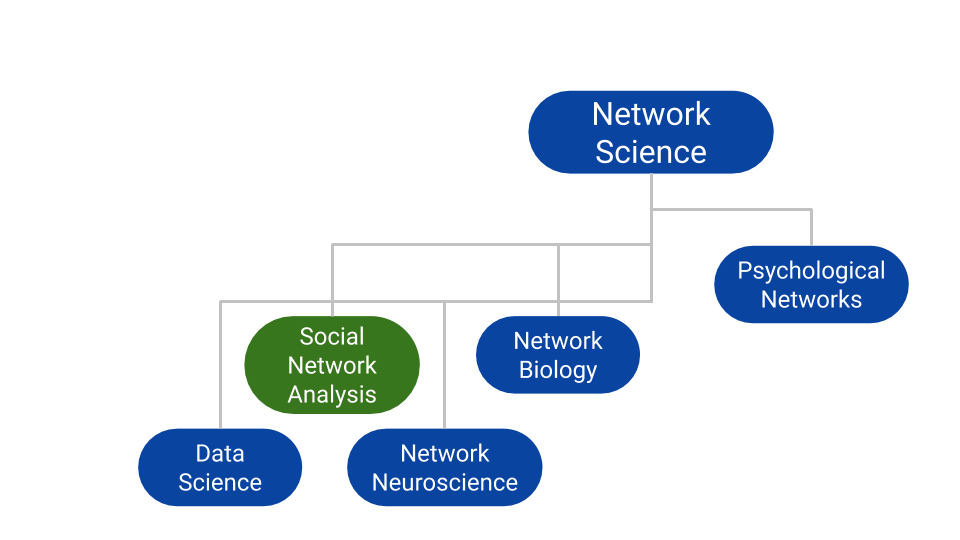1.2 What is A Social Network?
As you can see from the tree chart, only a subset of networks in the world as social networks. The key difference between social networks and other networks is that social networks have to involve people (or groups of people) and their perceptions, thoughts, interactions, and behaviors. Sometimes interactions between people are mediated by technologies. For instance, people can connect to one another by texting on their phone or travelling by plane, in which case the differentiation between what is a technological and a social network becomes a matter of degree. In this book we will deal with networks that are closer to the “purely social” end of the scale: Those involving people, their interactions, sentiments, and relations. The primary perspective that we wil take is that of social network analysis as developed in the discipline of sociology since the 1970s.
The inter-disciplinary field in charge of studying social networks is called social network analysis (SNA), and is composed of insights from a variety of other social science disciplines such as sociology, anthropology, psychology, communication, and others. SNA in its turn, is part of an even larger interdisciplinary field in charge of studying all types of networks called network science which includes work in physics, computer science, data science, biology, engineering, mathematics, and other fields. The relationship between these fields is depicted in figure 0.3.

Figure 0.3: Different types of networks.
